Airline meal is an integral part of the in-flight experience, yet often neglected. Many airlines serve their meals with much the same setup and the whole system appears to be outdated remaining unchanged since 1970s. Product designers explore the in-flight dining experience, offering a contemporary reinterpretation of this important part of any air travel.
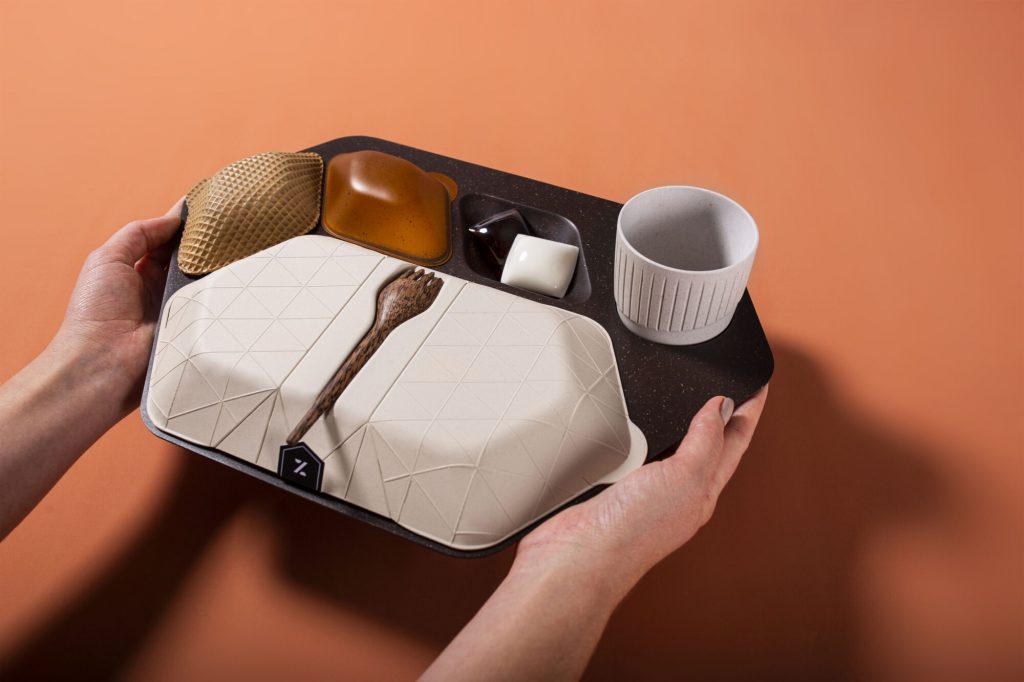
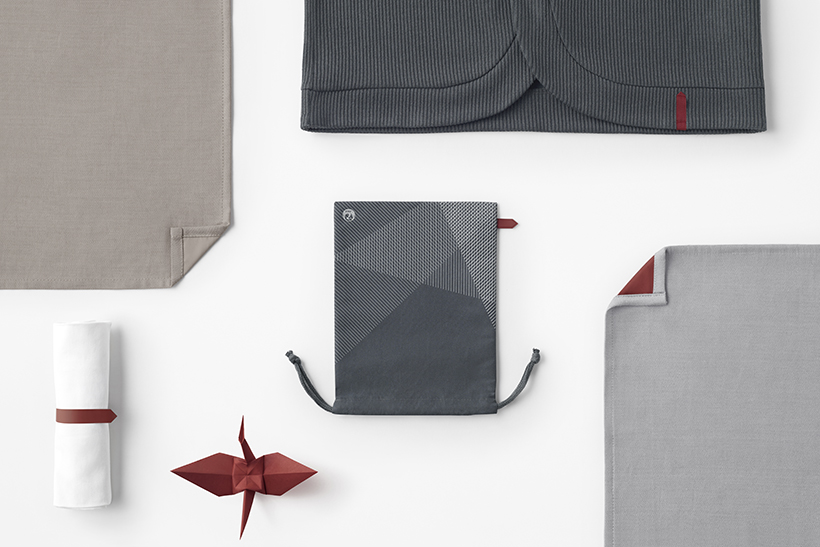
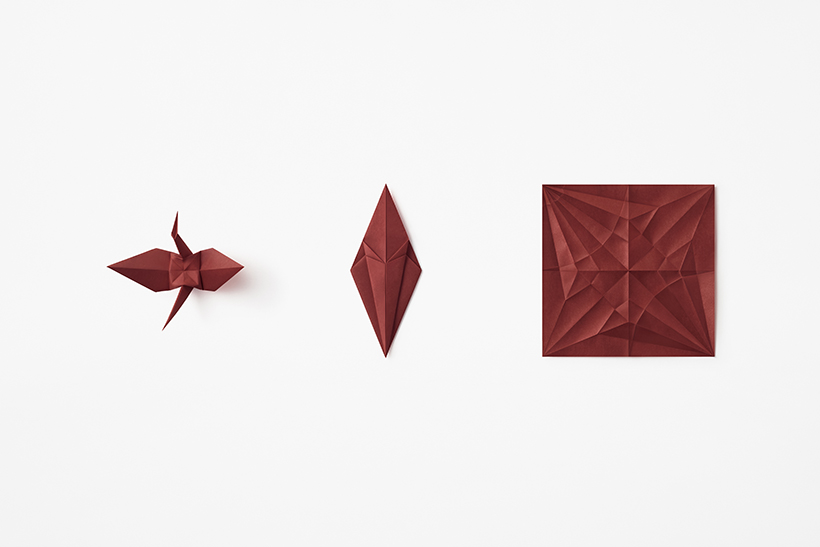
JAL in-flight amenities by Nendo
Japanese design firm Nendo has completed a makeover of all domestic and international in-flight amenities offered by the national carrier Japan Airlines (JAL). Inspired by the air company’s logo – a traditional crest known as a tsurumaru, in which a crane forms a circle with its outstretched wings, – the designs are based on the minimalist image of a red folded paper crane, a symbol of peace, prayer, and the spirit of hospitality.
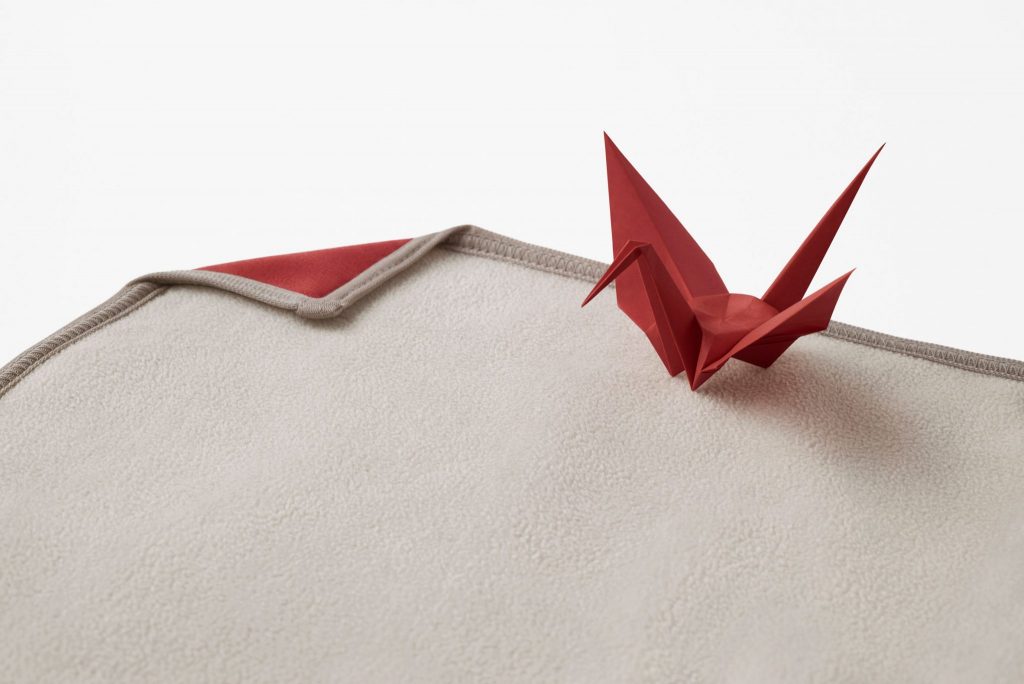
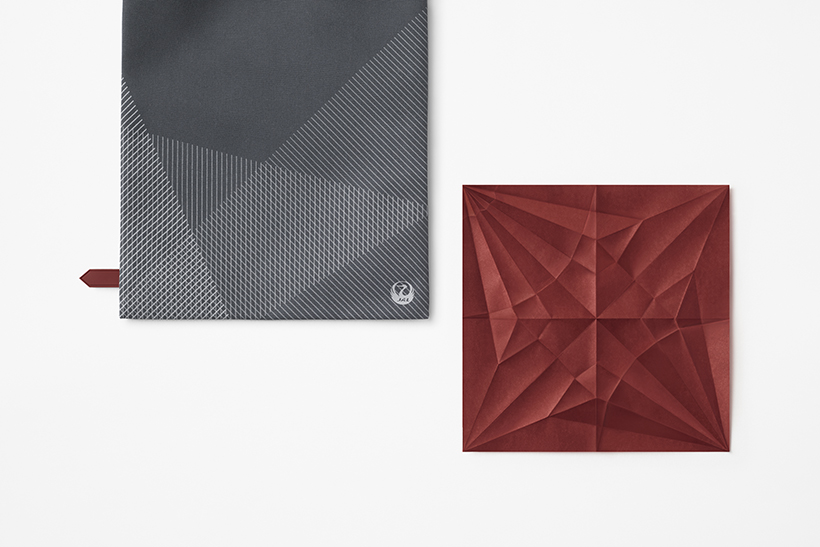
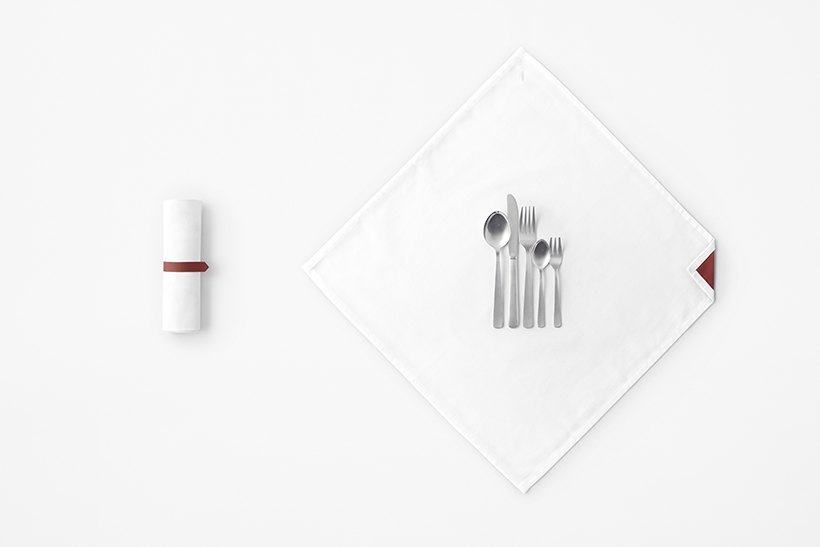
JAL in-flight amenities by Nendo
Tags emulating the paper crane’s wingtips are used for items such as cardigans, eye masks, slippers, and cutlery bands. Blankets, tablecloths, napkins, and other rectangular fabric items bear the detail of a folded corner, aiming to depict the crane’s head.
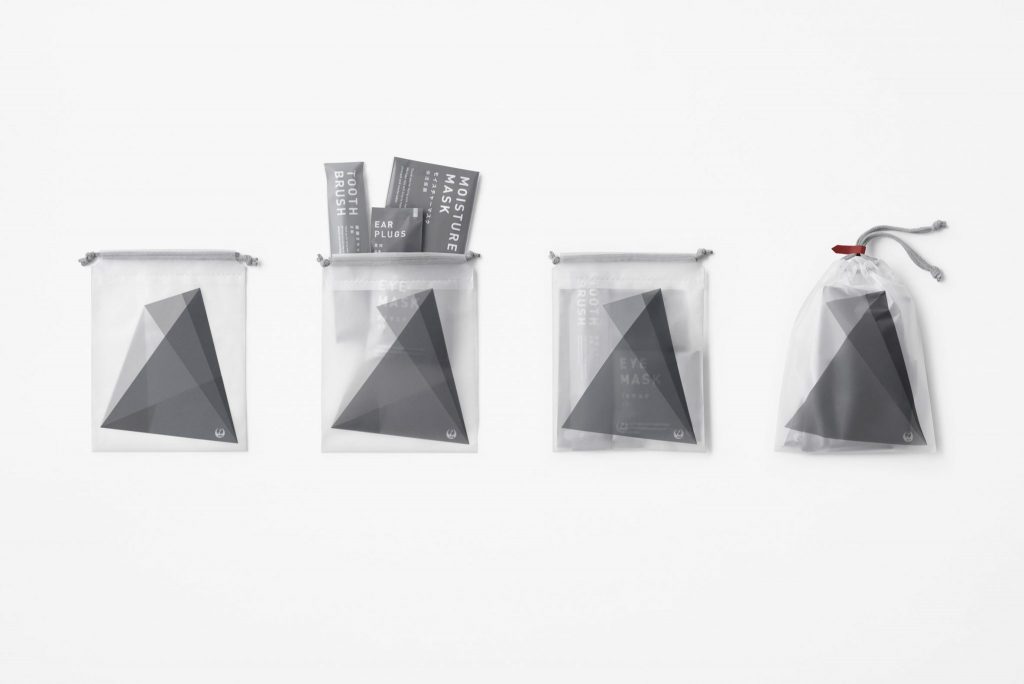
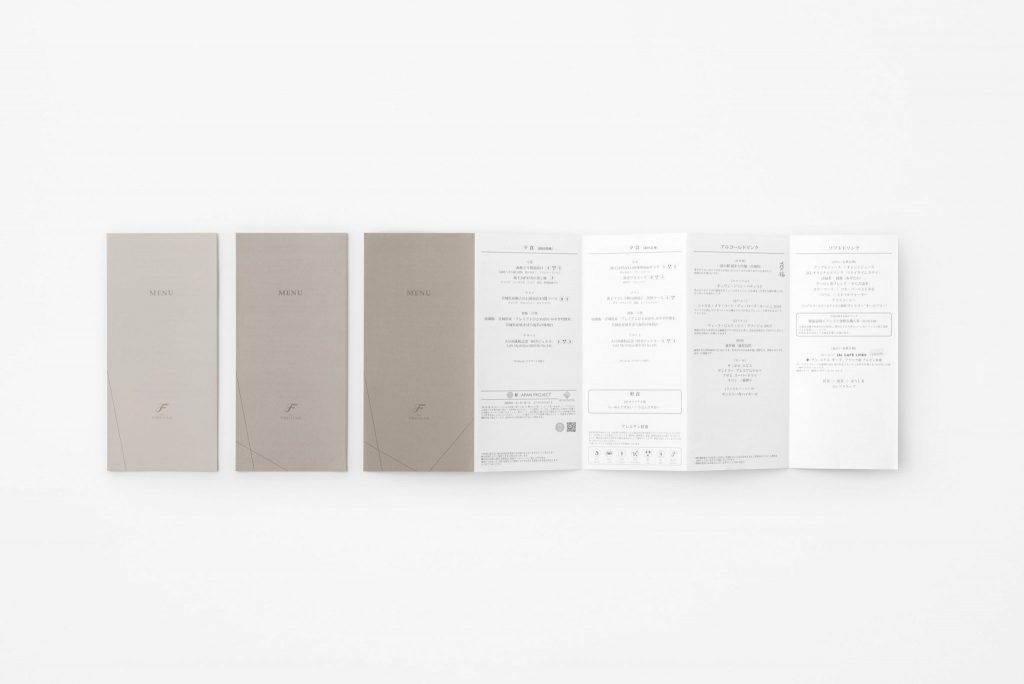
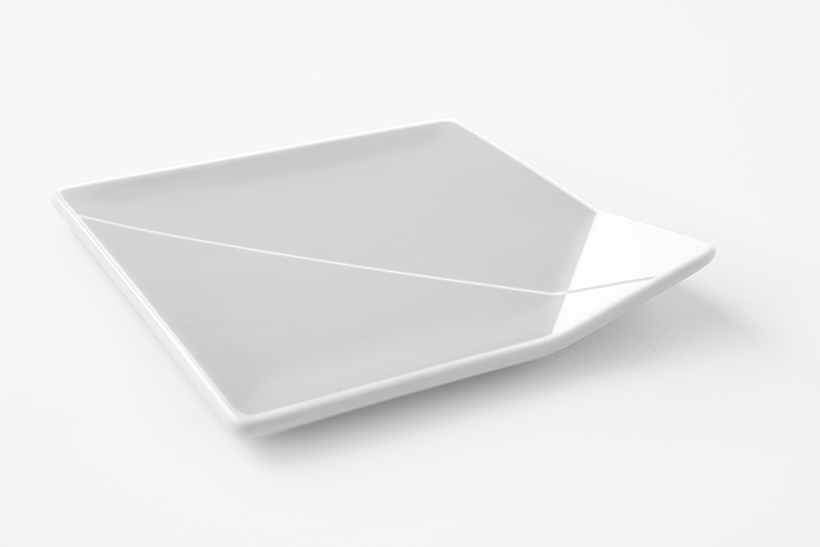
JAL in-flight amenities by Nendo
A more abstract approach is employed for in-flight cosmetics pouches, menu cards and the like – these include the tessellated pattern for folding a paper crane as the main design element. Similarly, paper placemats and dishes are crisscrossed by white and grey lines, which allow them to be perfectly arranged and stacked on the meal trays to reveal the crane’s folding pattern.
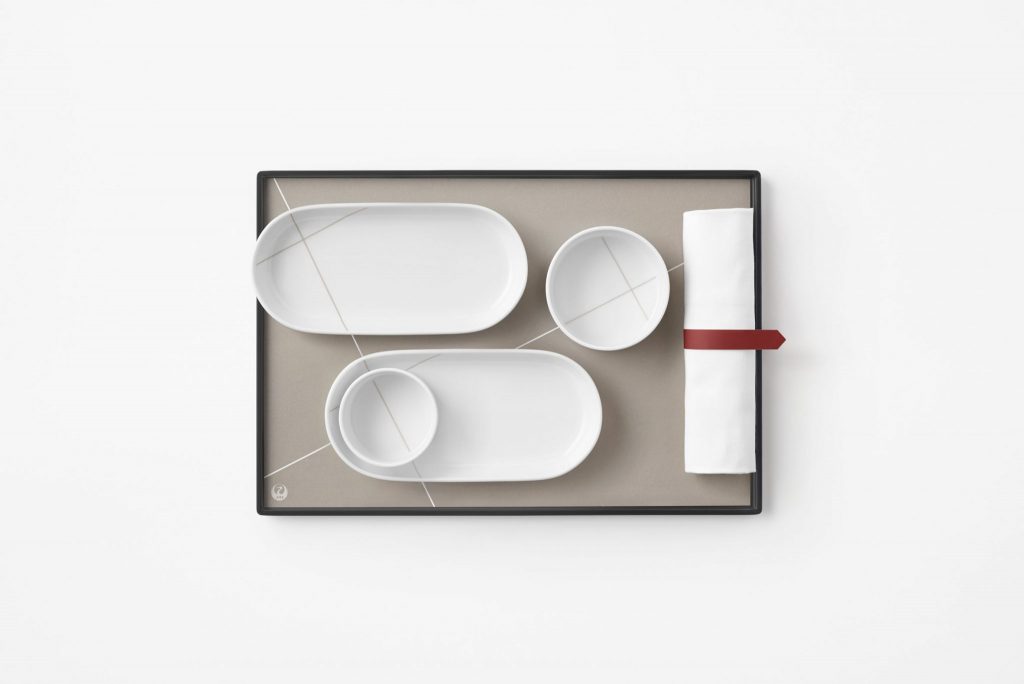

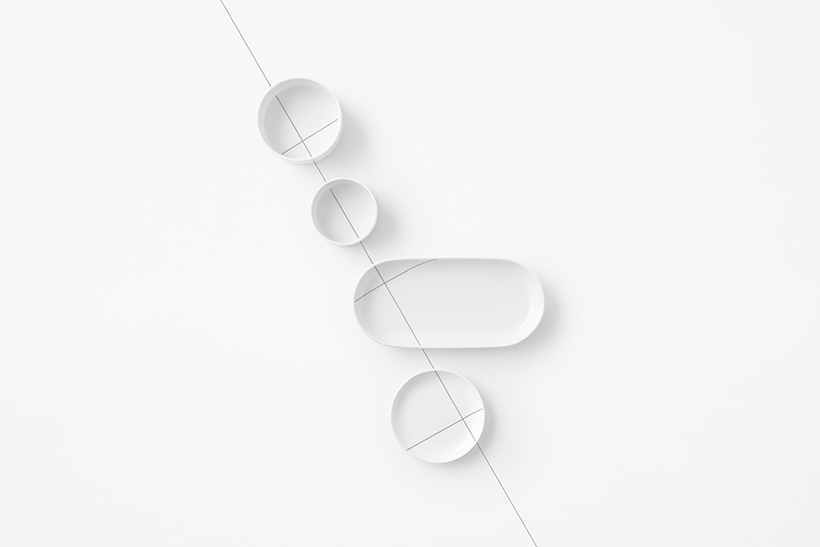
JAL in-flight amenities by Nendo
Though different from item to item in the past, package openings for items that stay the same across all Japan Airlines travel classes, such as earplugs, toothbrushes and cosmetic sachets, and the direction in which to tear them were unified with triangular and dotted line elements out of consideration for ease of use.
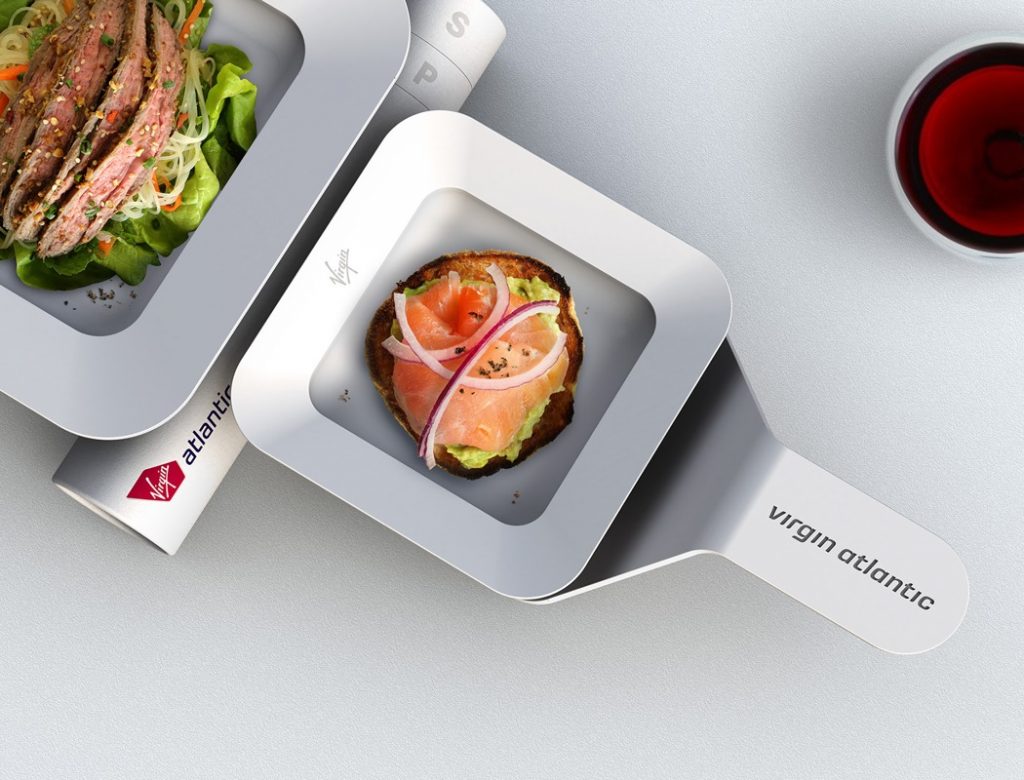
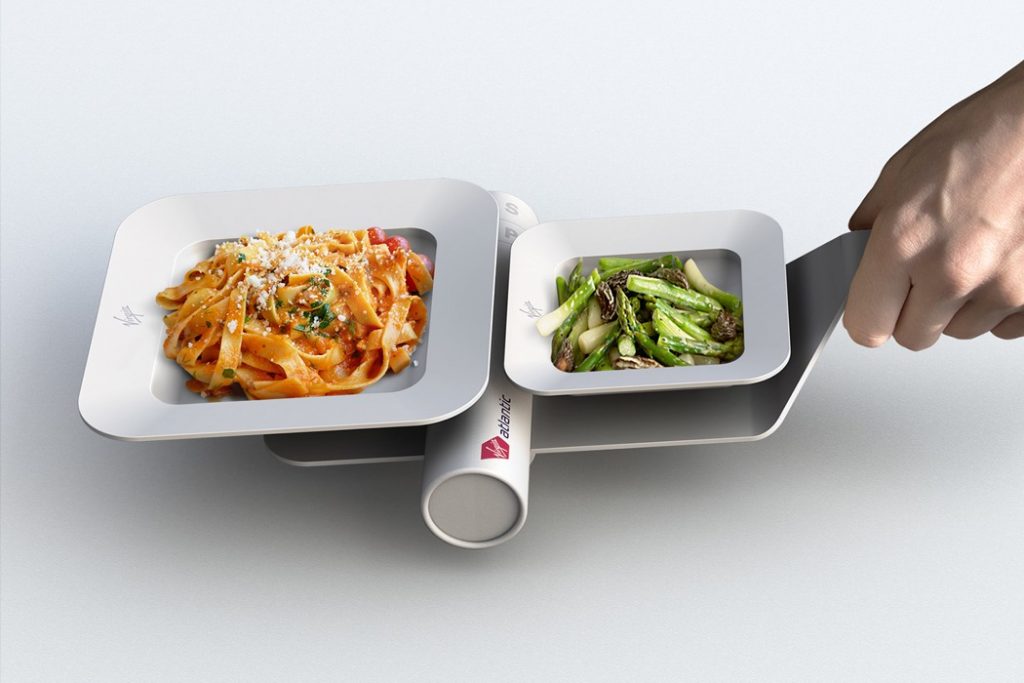
Y Class Meal Service for Virgin Atlantic by Youmeus Design
While Nendo focuses on the aesthetics of the in-flight amenities, London-based Youmeus Design has envisioned an innovative approach to how the meal is served on board an aircraft.
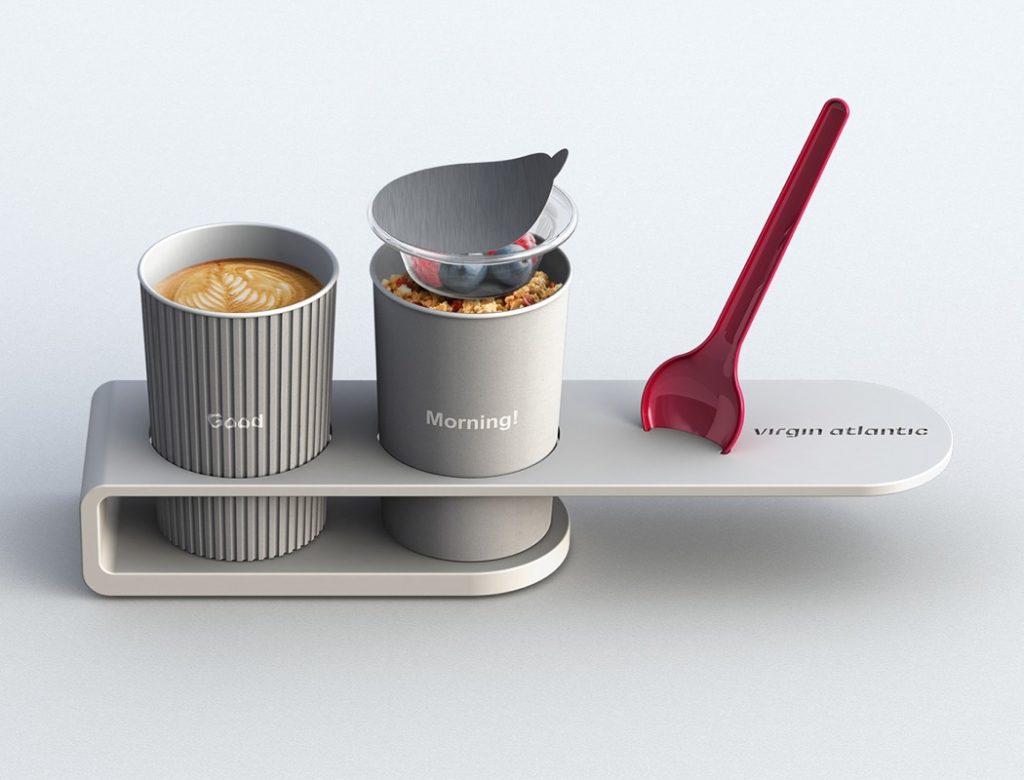
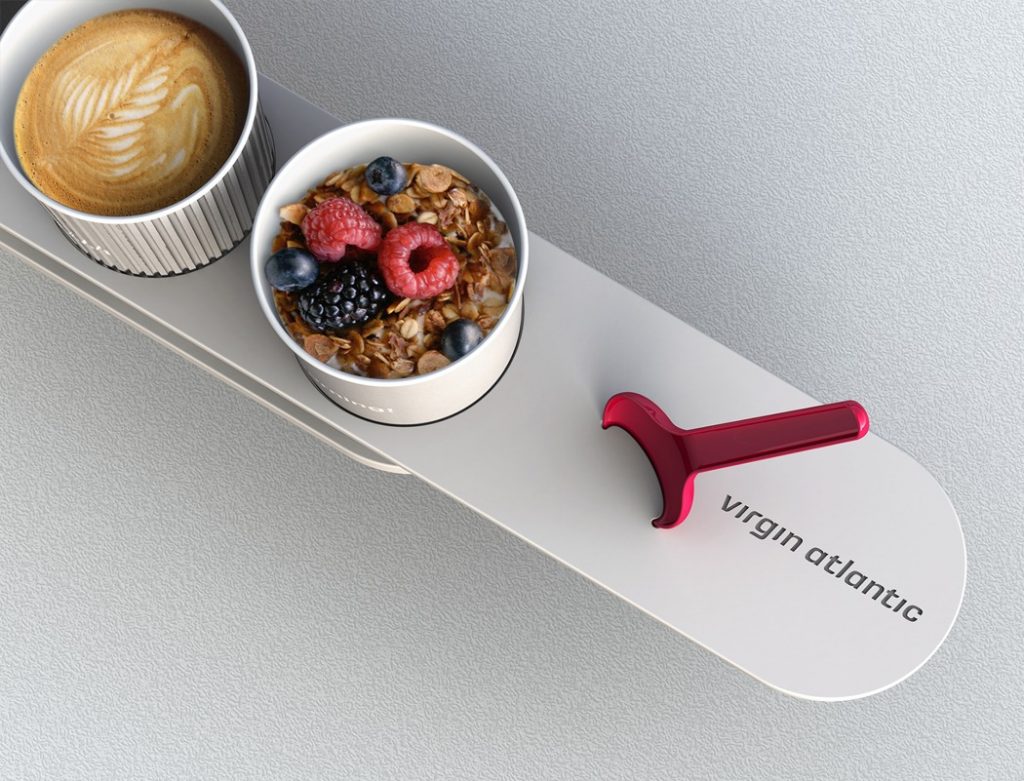
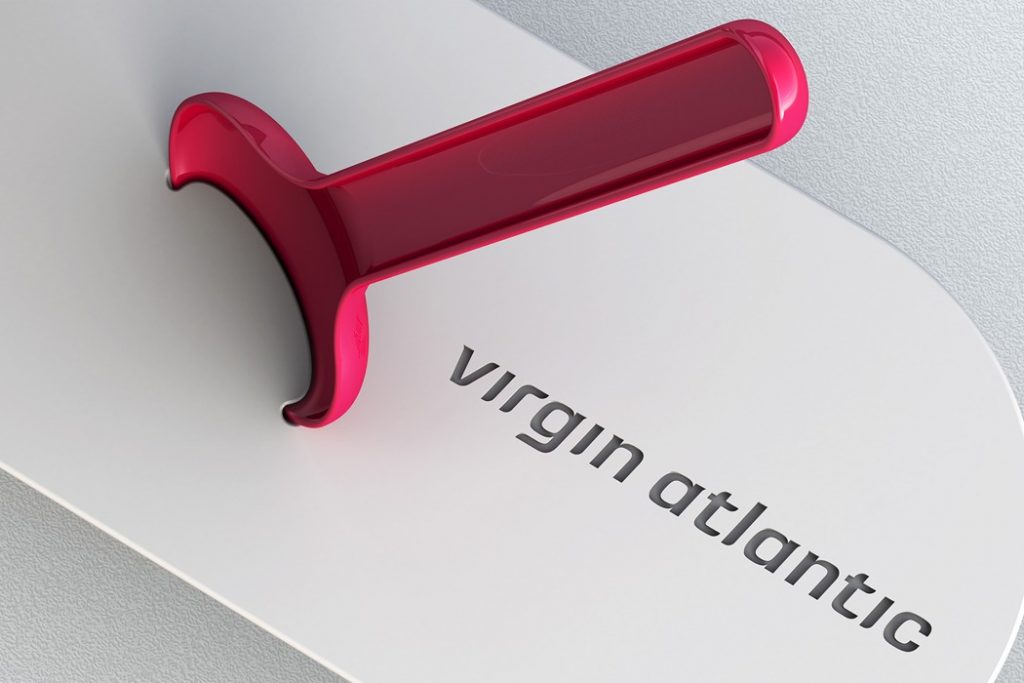
Y Class Meal Service for Virgin Atlantic by Youmeus Design
When approached by Virgin Atlantic Airways to rethink the overall economy meal service experience, the studio came up with a new concept of serving in-flight meals, drawing inspiration from the dinning ceremonies and the smart modular table-wear.
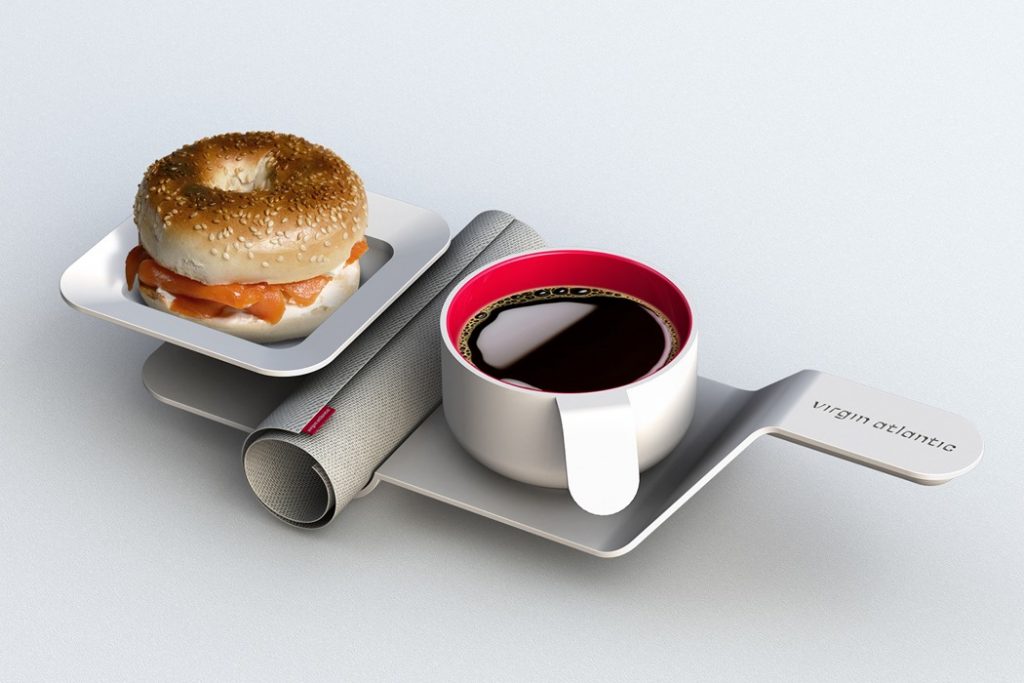
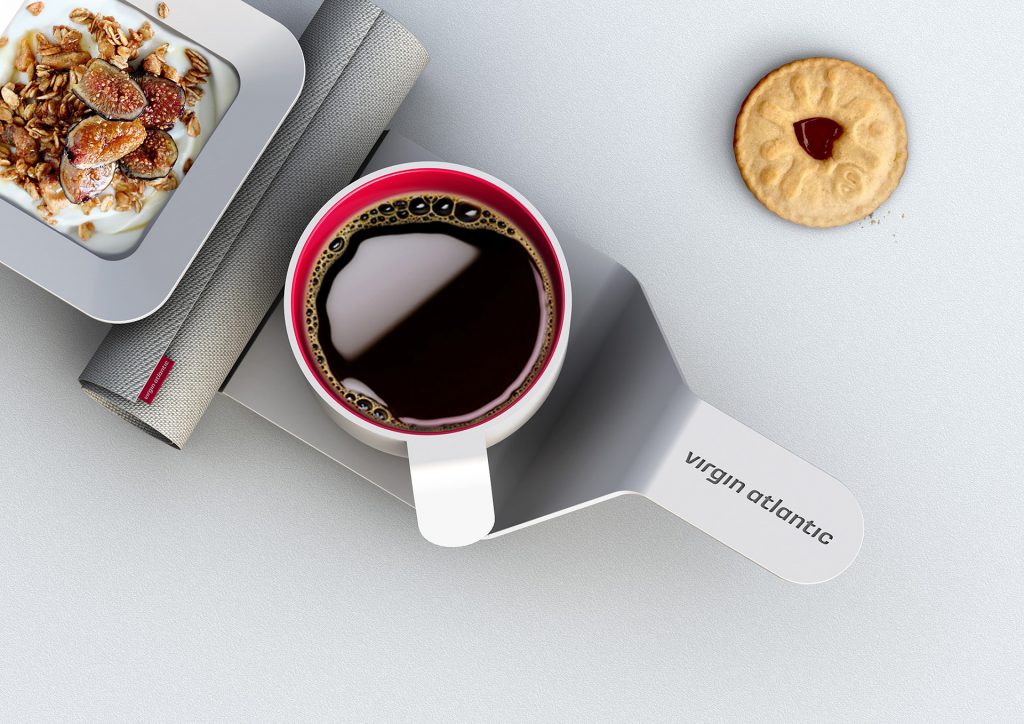
Y Class Meal Service for Virgin Atlantic by Youmeus Design
The new set of products includes everything from cutlery to cupholders, joined by the same exploratory and timely design language that ties them together.
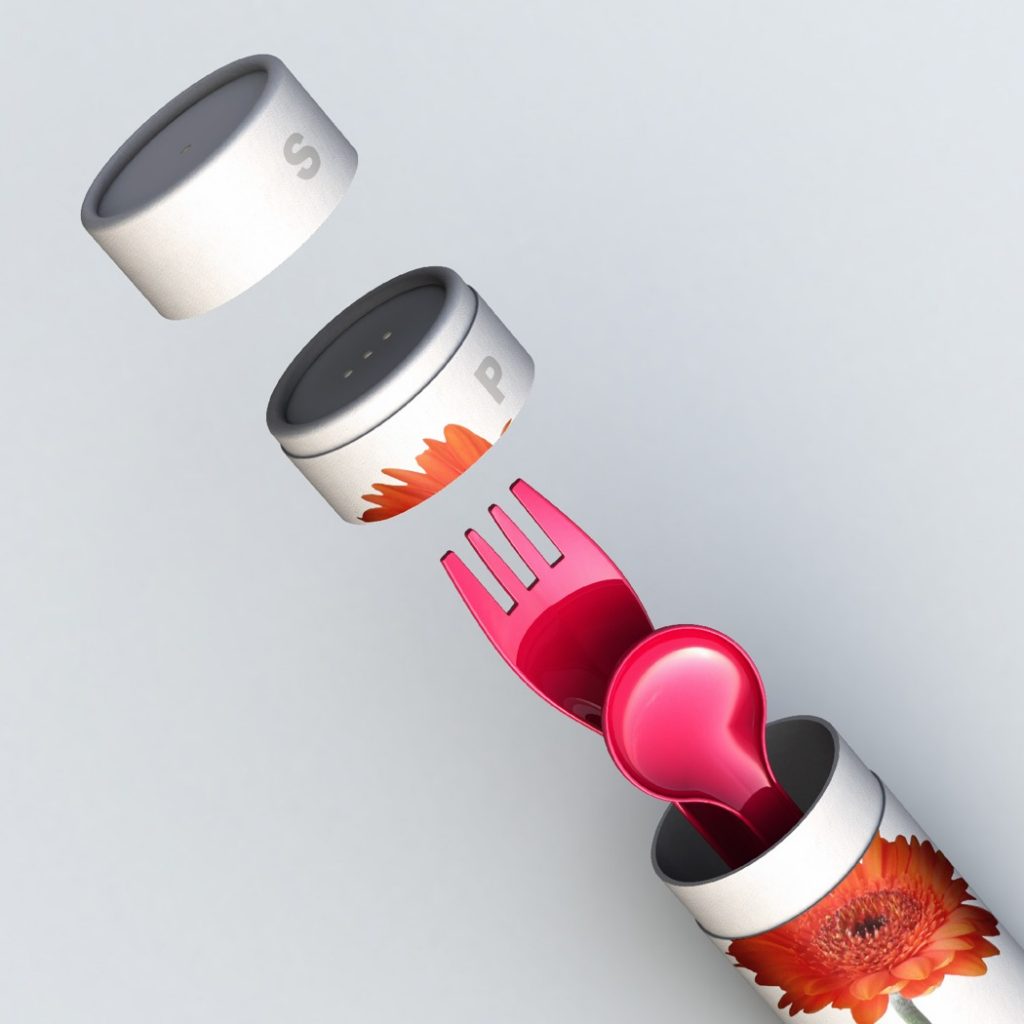
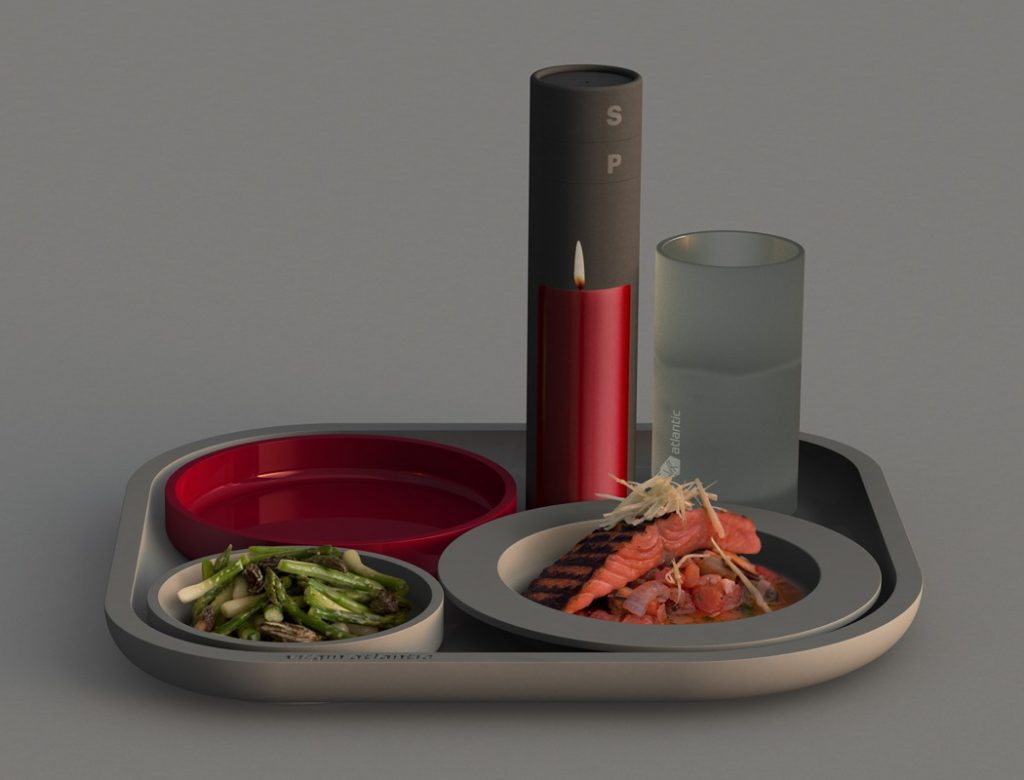
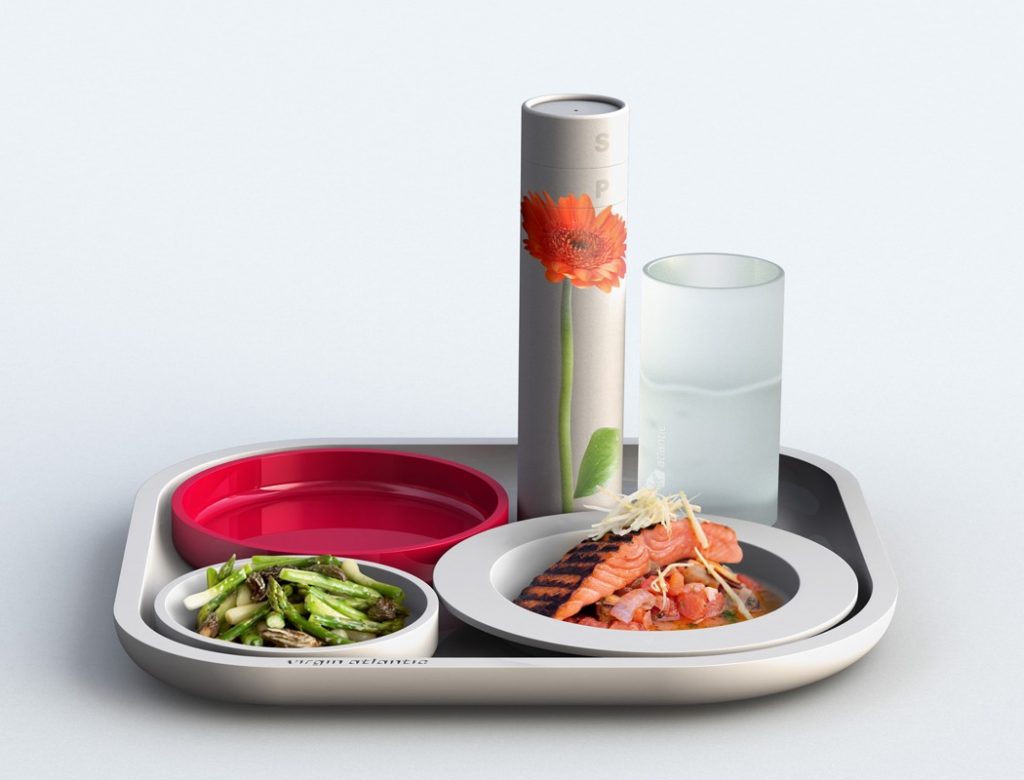
Y Class Meal Service for Virgin Atlantic by Youmeus Design
The serving tray features a curved recess, which can accommodate a folded placemat or a cylindrical vessel containing a set of cutlery as well as integrated salt cellar and pepper caster. The container is decorated with printed images of a flower or a candle to complement the elegant dinner setting, harmoniously designed to fit the needs of the users while bringing a new light to the in-flight dining experience.
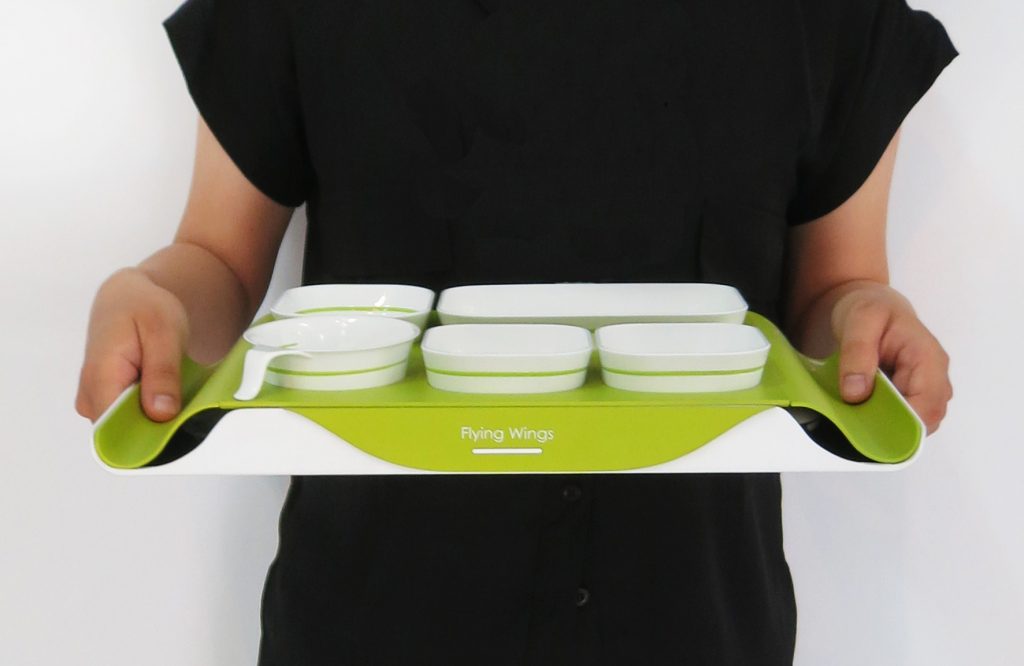
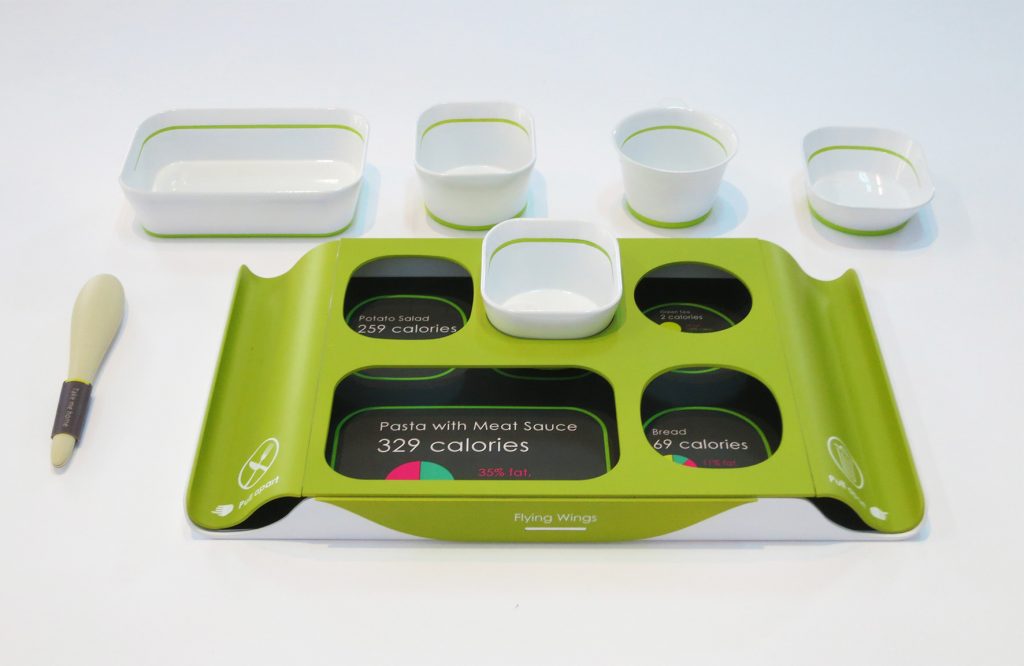
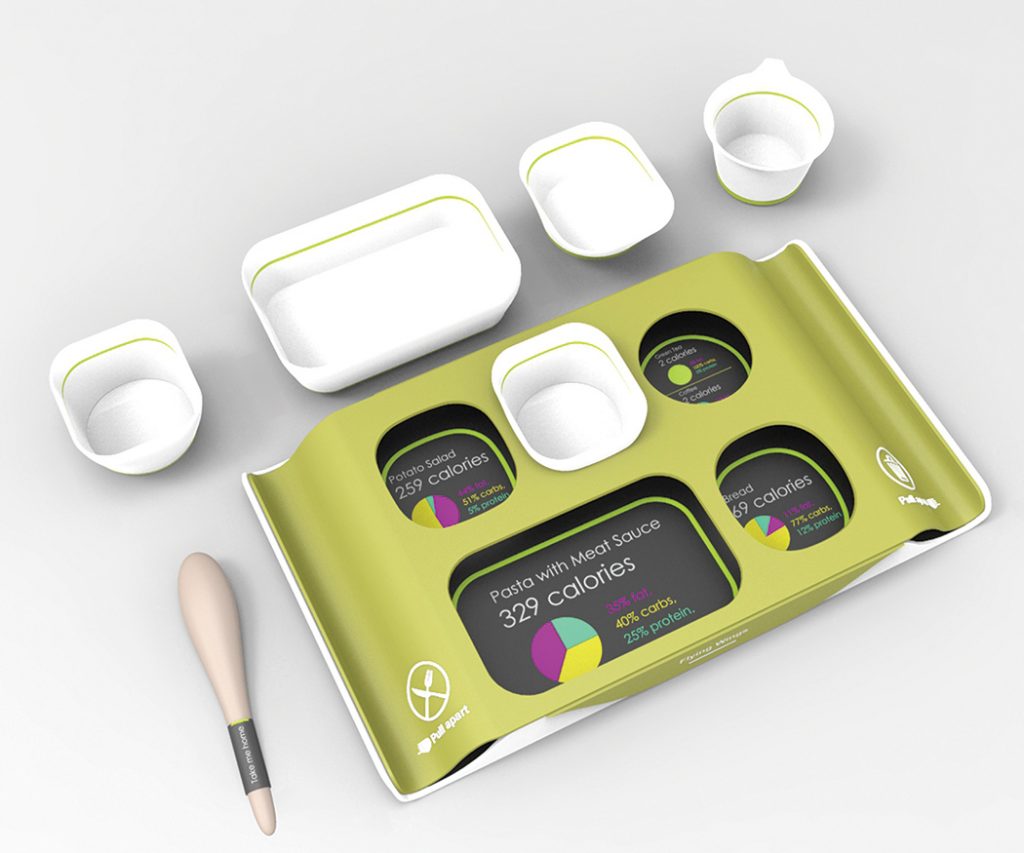
Flying Wings by Lan Szu-Ting
Award-winning in-flight tableware for the economy class by Taipei-based product designer Lan Szu-Ting focuses on the functional side of the task, incorporating several practical solutions both for passengers and flight attendants.
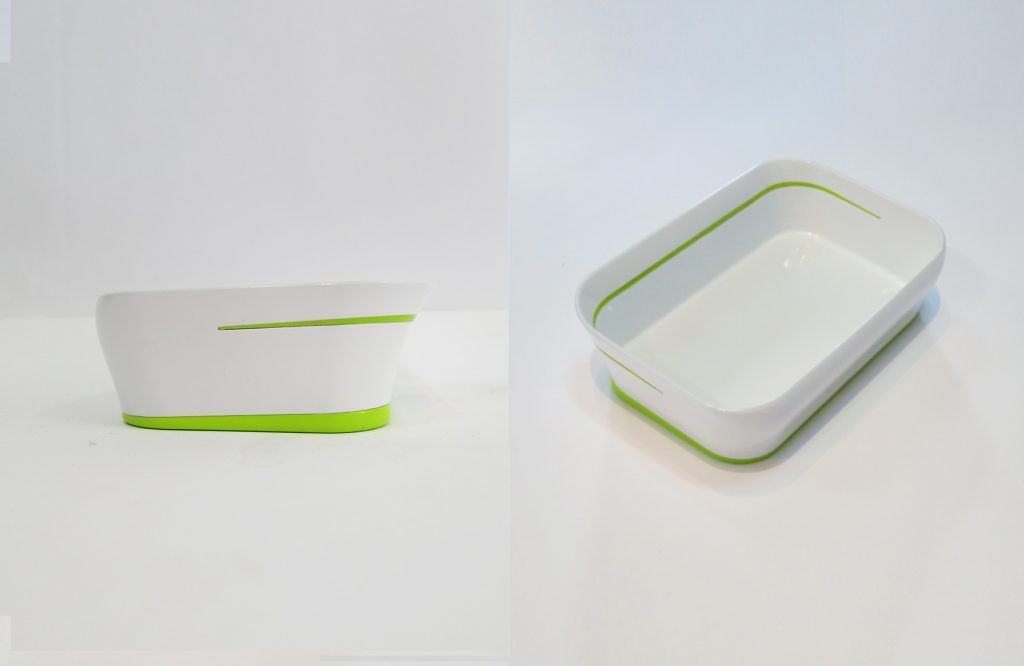
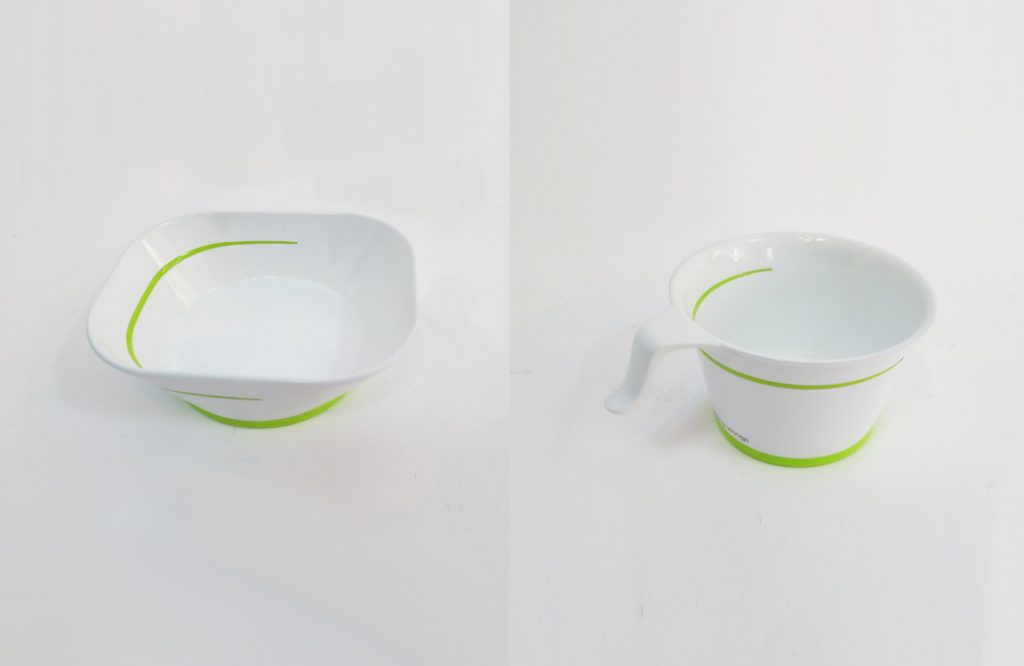
Flying Wings by Lan Szu-Ting
The set comes in a meal tray with a green upper tier punctured with holes of different sizes and shapes to keep various cups and food containers securely in place. During turbulence, the design of the tray provides additional stability and eases the difficulties that flight attendants face when delivering the meals. When the passenger picks up a cup or a bowl, they can find nutritional information about the dishes served. The bowls themselves boast a special shape, which makes it easier for passengers to use them, especially when the cabin is shaky.
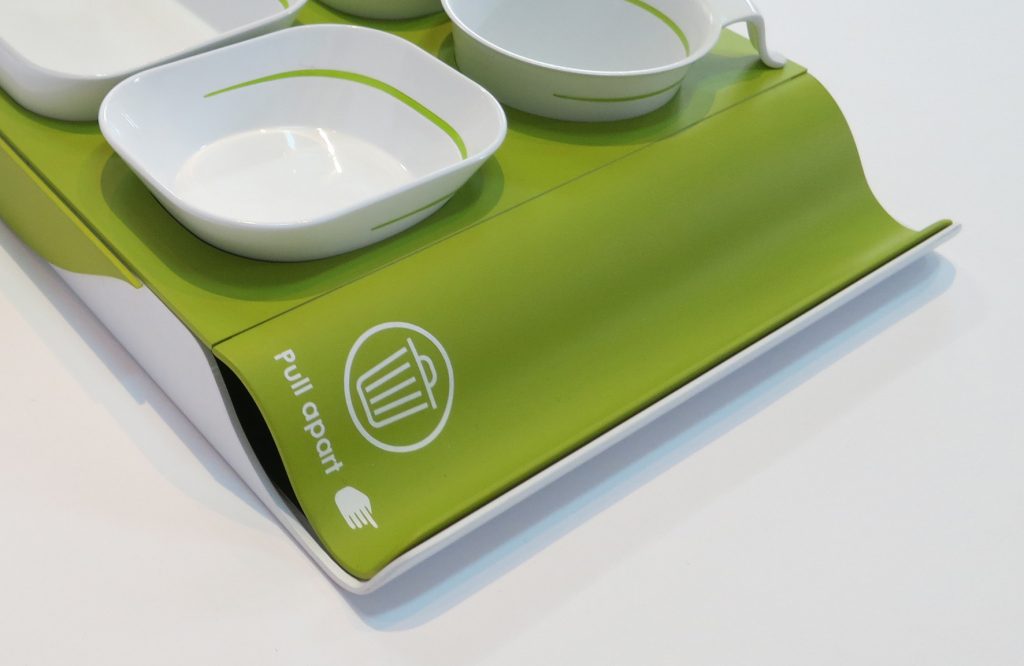
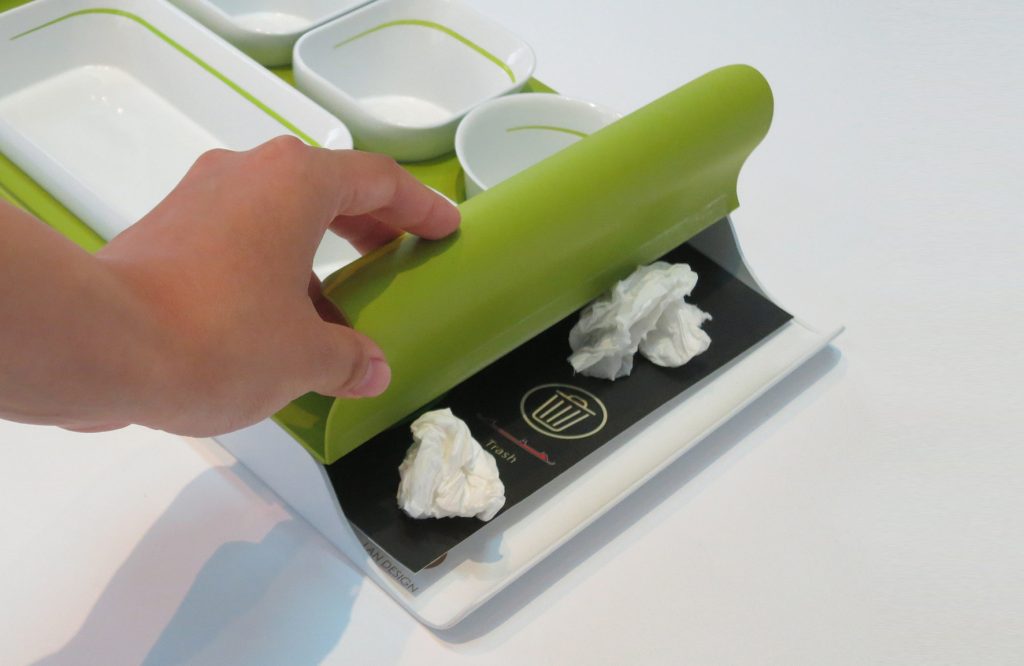
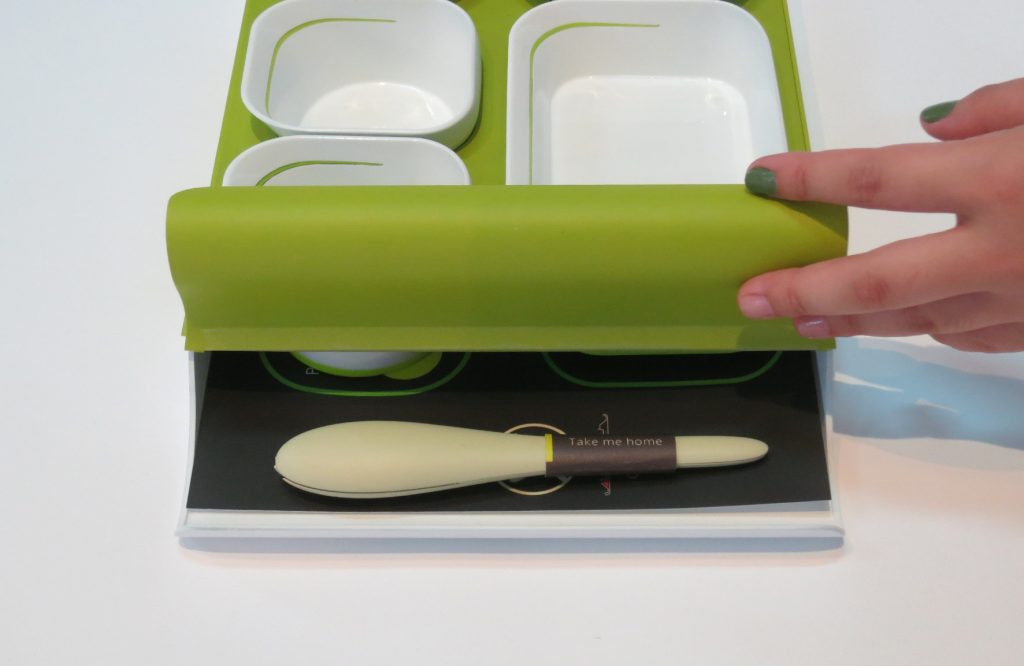
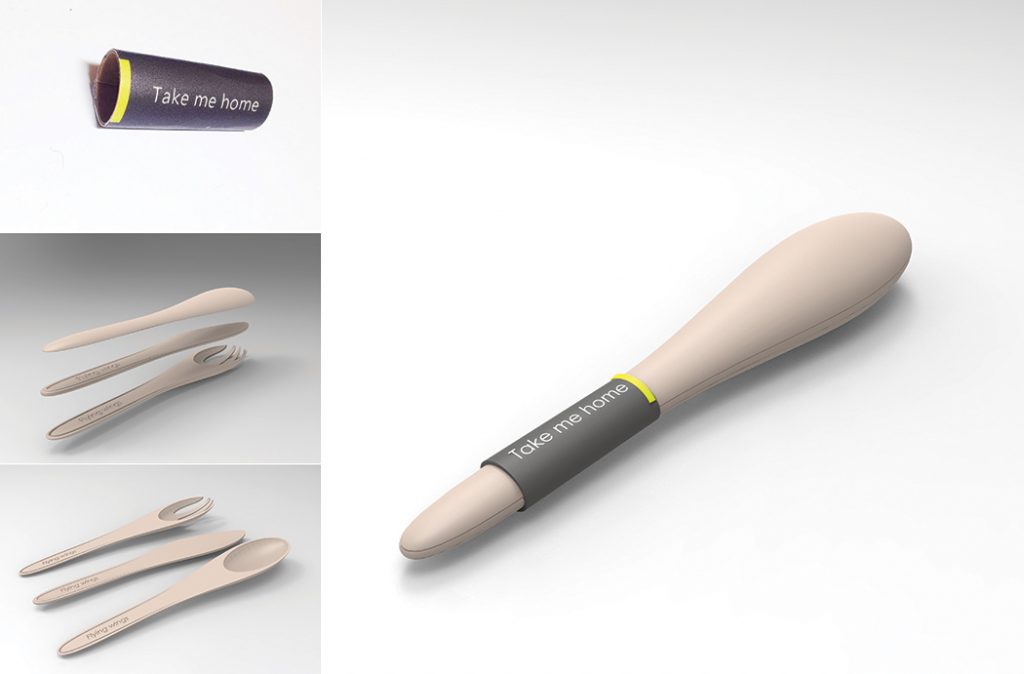
Flying Wings by Lan Szu-Ting
The cover also provides an enclosure for a compact set of cutlery, as well as for napkins, wrappers and other garbage, so that the passenger has a place to tuck all of that neatly away. The neatly packaged cutlery can be taken away from the aircraft and reused by the passengers – a solution that is proposed to address environmental concerns about cabin waste generated on passenger flights.
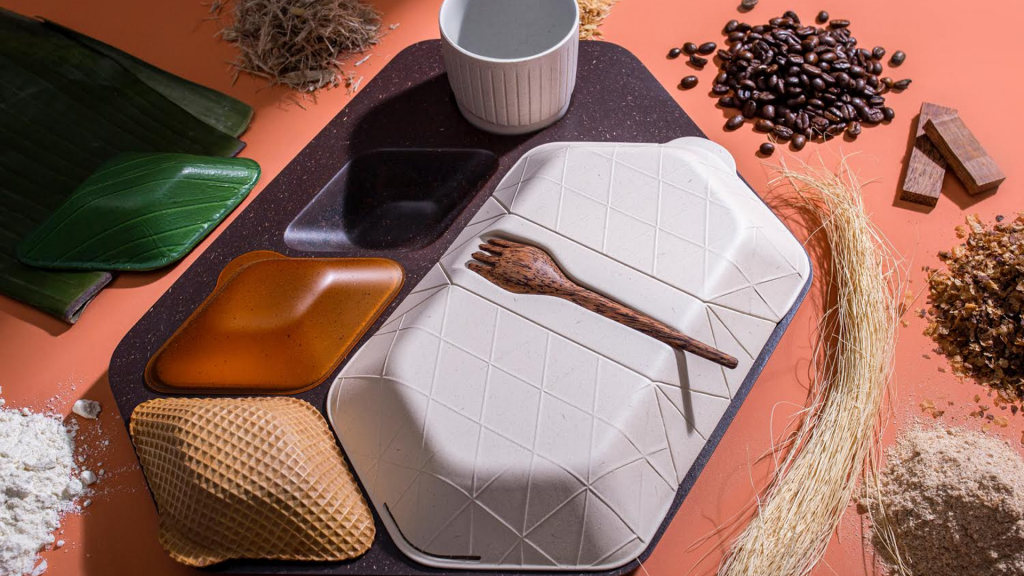
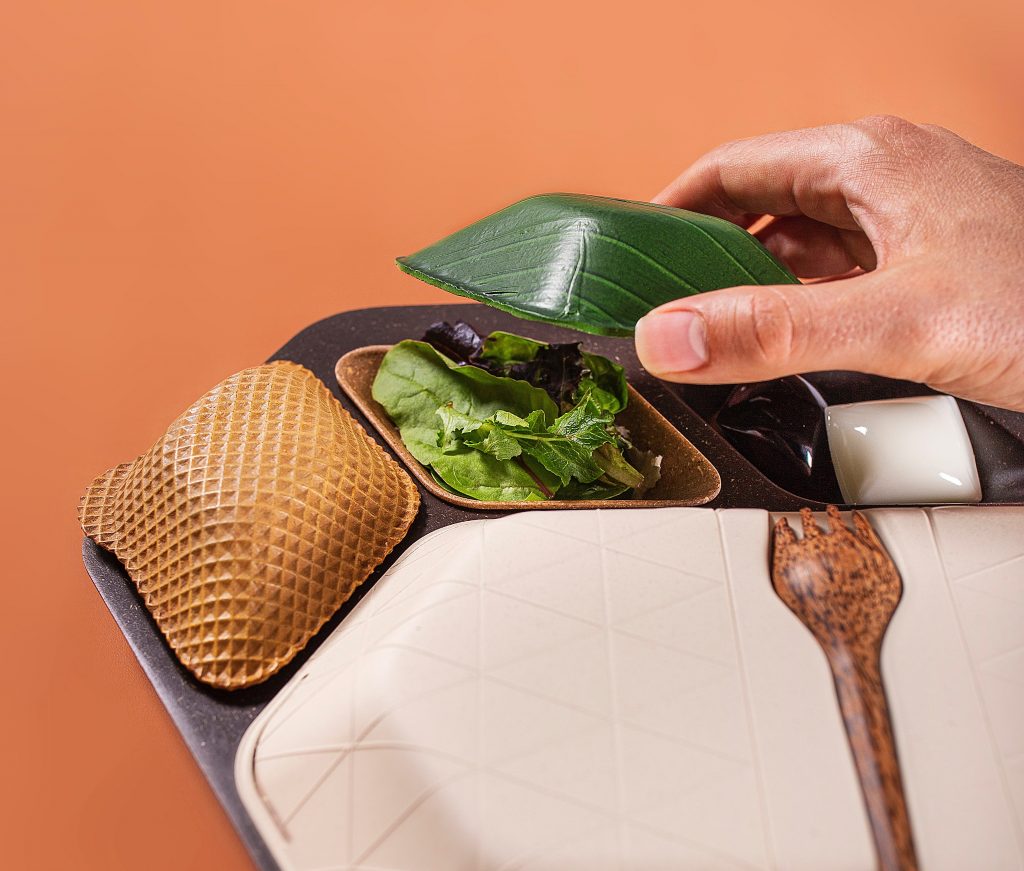
Get On Board meal tray by PriestmanGoode (also header image)
PriestmanGoode, a leading global travel and transport design studio, is also concerned by the amount of cabin waste approaching estimate of 5.7 million tons of single-use plastic, amenity kits, earphones and food waste. The team ingenuously explores ways in which design thinking and material innovation can be used to address the vast issue of waste, in order to move towards a more conscious way to travel.

Get On Board meal tray by PriestmanGoode
Among other things, the studio created an alternative sustainable version of the meal tray, where every element is made from edible, biodegradable or commercially compostable materials, such as coffee grounds and husks for the tray, coconut wood for cutlery, soluble seaweed for condiment containers, rice husk for cups and algae for cup liners.